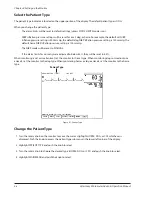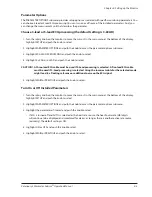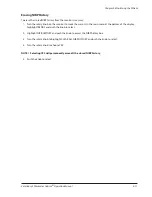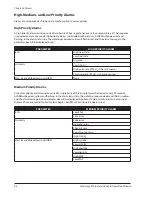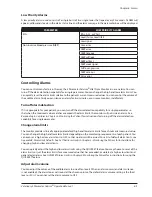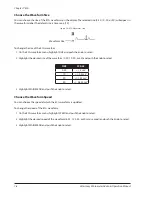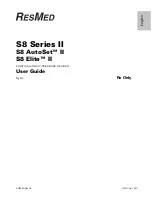
Chapter 5: Monitoring the Patient
Veterinary 3 Parameter Advisor
®
Operation Manual
5-7
Resetting Alarm Limits using the QUICKSET Feature
To reset all high and low alarm limits for the current measured values using the QUICKSET feature:
Turn the rotary knob on the monitor to move the cursor. On the main menu at the bottom of the display,
1.
highlight QUICKSET and push the knob to select.
Highlight QUICKSET ALL LIMITS and push the knob to select. The alarm limit box will appear, displaying the
2.
reset high and low alarm limits.
If the new limits are correct and clinically appropriate for your patient, highlight MAIN MENU and push the
3.
knob to select.
If the new limits are not correct and clinically appropriate for your patient:
4.
Turn the rotary knob to highlight the name of the incorrect measured value and push the knob to select.
a.
Highlight the incorrect high (HI) or low (LO) limit and push the knob to select.
b.
Turn the rotary knob to choose the desired value and push the knob to select.
c.
Turn the rotary knob to move the cursor back to the name of the measured value and push to select.
d.
When the high and low alarm limits are correct and clinically appropriate for your patient, highlight
e.
MENU in the alarm limit box and push the knob to select.
Highlight MAIN MENU and push the knob to select.
f.
To use the QUICKSET feature to reset an alarm limit for a measured value that matched or exceeded the existing
alarm limit:
Turn the rotary knob on the monitor to move the cursor. On the main menu at the bottom of the display,
1.
highlight QUICKSET and push the knob to select.
Highlight QUICKSET VIOLATED ONLY and push the knob to select. If an alarm limit was reset, the alarm limit
2.
box will appear, displaying the reset high or low alarm limit. If no change was made, the main menu will
reappear on the display. This may be the case if no alarm limits were violated, if the new QUICKSET values
are the same as the old ones, or if NO CHG (no change) was selected for the QUICKSET limit.
If the new limit is correct and clinically appropriate for your patient, highlight MAIN MENU and push the
3.
knob to select.
If the new limit is not correct and clinically appropriate for your patient:
4.
Turn the rotary knob to highlight the name of the incorrect measured value and push the knob to select.
a.
Highlight the incorrect high (HI) or low (LO) limit and push the knob to select.
b.
Turn the rotary knob to choose the desired value and push the knob to select.
c.
Turn the rotary knob to move the cursor back to the name of the measured value and push to select.
d.
When the high and low alarm limits are correct and clinically appropriate for your patient, highlight
e.
MENU in the alarm limit box and push the knob to select.
Highlight MAIN MENU and push the knob to select.
f.


